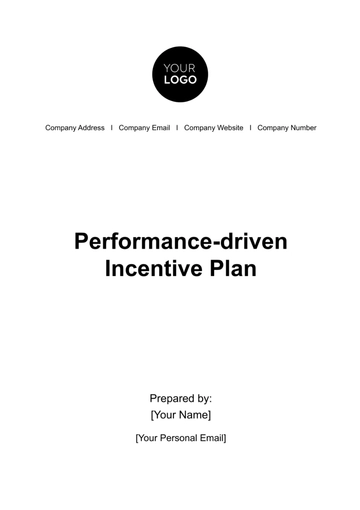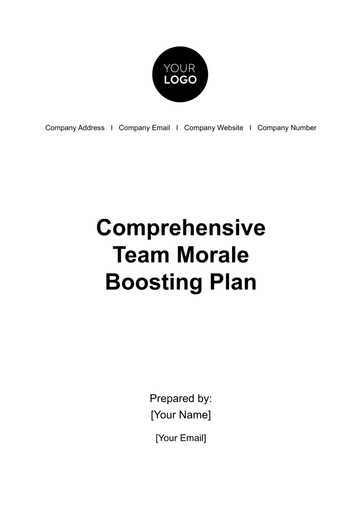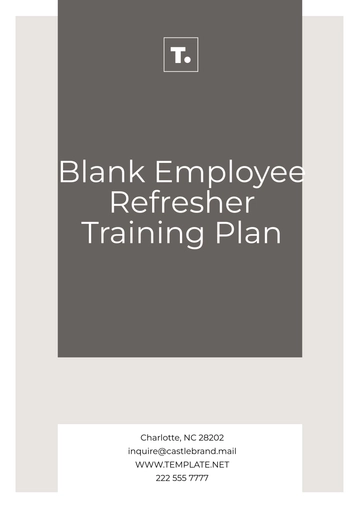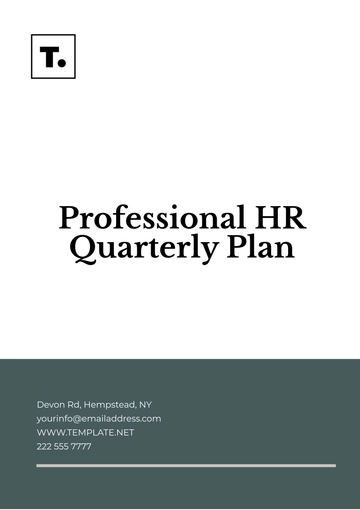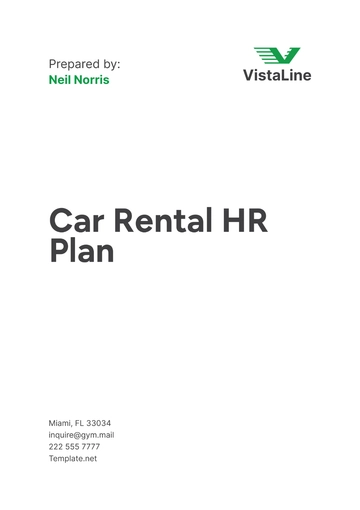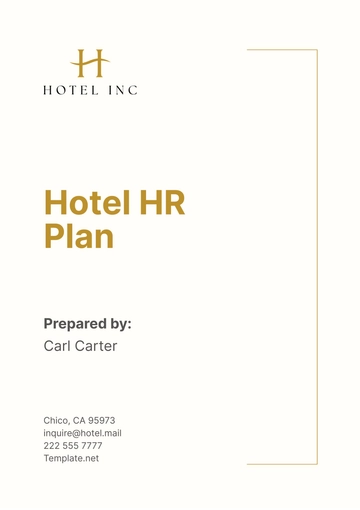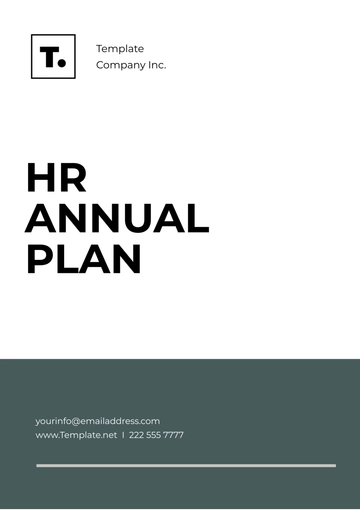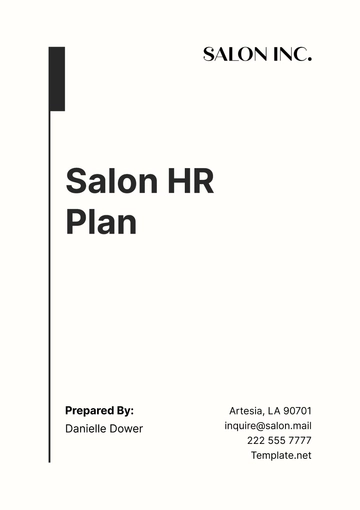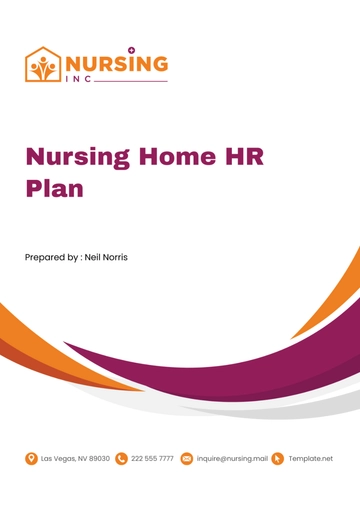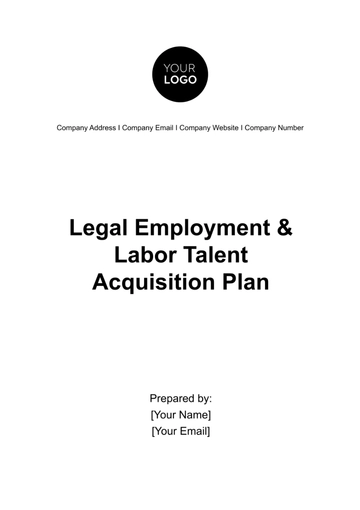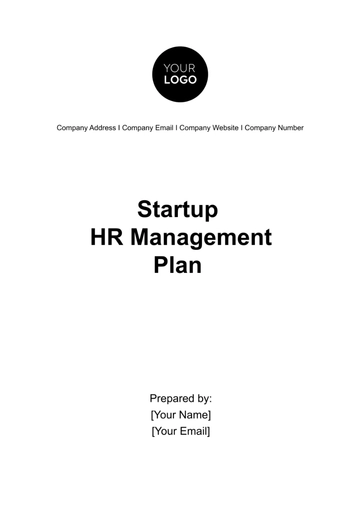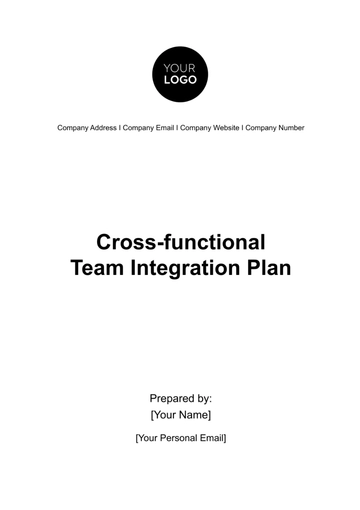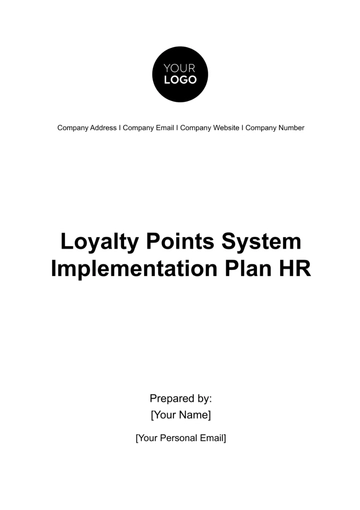Free Profit-Sharing Plan Documentation HR

The [Your Company Name] Profit-Sharing Plan is a strategic initiative born from our unwavering commitment to our employees and our pursuit of excellence. Rooted in the belief that a motivated and engaged workforce is at the core of our success, this plan serves as a testament to our dedication to fostering a culture of shared achievement and prosperity within our organization.
At [Your Company Name], we understand that the heartbeat of our organization is our dedicated workforce. It is our employees, with their collective skills, passion, and unwavering commitment, who drive our company forward. We firmly believe that their hard work and perseverance should be not only acknowledged but also rewarded in a meaningful and tangible way. The Profit-Sharing Plan is the embodiment of this belief, reflecting our deep appreciation for the integral role our employees play in our journey towards success.
Purpose and Objectives of the Plan
The primary purpose of the [Your Company Name] Profit-Sharing Plan is to provide eligible employees with a direct stake in the company's financial performance. This serves several key objectives:
To align employee interests with company success, promoting a sense of ownership and commitment.
To attract and retain top talent by offering a competitive and compelling incentive.
To encourage collaboration and teamwork, as employees work collectively towards achieving company goals.
To foster financial security and retirement readiness among our employees.
Plan Overview
The [Your Company Name] Profit-Sharing Plan is a discretionary contribution plan that allows eligible employees to share in the financial success of the company. Below are the key components of the plan:
Eligibility Criteria for Employees
To be eligible for participation in the Profit-Sharing Plan, employees must meet the following criteria:
Full-time employment status, working a minimum of 30 hours per week.
Completion of one year of continuous service with [Your Company Name].
Active employment status on the last day of the fiscal year.
Plan Contribution Structure
The company's contributions to the Profit-Sharing Plan are determined by a formula based on the company's annual profits and the employee's compensation. Contributions are made annually and are allocated to eligible employees' accounts based on their compensation. The formula for calculating contributions is as follows:
Profit-Sharing Percentage is determined based on the company's financial performance, as outlined in the plan's performance metrics.
Profit Allocation
Profits allocated under the [Your Company Name] Profit-Sharing Plan will be distributed among eligible employees based on the following factors:
Tenure: | Performance: |
Employees who have longer tenures with the company will receive a higher share of the profit allocation. The longer an employee has been with the company, the greater their share. | Performance evaluations will play a significant role in profit allocation. Employees with exceptional performance ratings will receive a larger portion of the allocated profits. |
Calculation Methodology
Profit allocation will be calculated using a combination of the employee's tenure and performance ratings. The specific methodology is as follows:
Tenure will be assigned a weight of 60%.
Performance ratings will be assigned a weight of 40%.
Employees will be ranked based on their combined tenure and performance scores.
Profits will be allocated based on the employee's rank, with higher-ranking employees receiving a larger share.
Vesting
Vesting schedules are a critical component of our Profit-Sharing Plan, outlining how employees gradually acquire ownership of their share of profits over time. This approach ensures that employees who remain committed to the company are rewarded with a greater stake in the profits, promoting long-term engagement and retention.
Our vesting schedules are designed to provide clear milestones for employees to achieve full ownership of their profit-sharing benefits. The vesting process acknowledges and rewards loyalty and dedication, encouraging our team members to continue contributing to the company's success.
How Employees Become Vested in Their Share of Profits
To become vested in their share of profits, employees must meet specific criteria related to their tenure with the company. We believe that this approach aligns the interests of our employees with the long-term growth and prosperity of the organization. Here's a breakdown of how vesting works:
Yearly Vesting: | Employees become vested in a percentage of their share of profits each year, starting from their date of eligibility. Vesting occurs on an annual basis, ensuring a gradual buildup of ownership over time. |
Cumulative Vesting: | Vesting is cumulative, meaning that each year's vesting percentage is added to the previous year's percentage. This allows employees to steadily increase their ownership stake with continued service to the company. |
Full Vesting: | After a specific number of years of service (as outlined in the vesting schedule table below), employees achieve full vesting, meaning they are entitled to 100% ownership of their share of profits. At this point, the entire share becomes theirs to keep, regardless of whether they continue their employment with the company. |
Vesting Schedule Table
The following table provides a clear illustration of our vesting schedule, outlining the number of years of service required for employees to achieve various levels of vesting:
Years of Service | Vesting Percentage |
1 | 20% |
2 | 40% |
3 | 60% |
4 | 80% |
5+ | 100% |
For example, if an employee has completed three years of service, they will be vested in 60% of their share of profits. This means that they have earned the right to 60% ownership of the allocated profits, which will be paid out to them when profit distributions are made.
It's important to note that our vesting schedule provides a fair and progressive approach to reward long-term commitment, aligning the interests of our employees with the continued success of our company. As employees reach full vesting, they gain a significant stake in the financial well-being of the organization, reinforcing the sense of ownership and pride in their contributions to our shared success.
Plan Administration
Roles and Responsibilities of Administrators
The Profit-Sharing Plan is administered by the HR Department in collaboration with the Finance Department. Each department has specific responsibilities to ensure the efficient operation of the plan:
HR Department Responsibilities:
| Finance Department Responsibilities:
|
Procedures for Employee Enrollment
Employee enrollment in the Profit-Sharing Plan is designed to be a straightforward process, ensuring inclusivity and ease of participation:
Eligibility Determination: All full-time employees are eligible to participate in the Profit-Sharing Plan after completing one year of continuous service.
Automatic Enrollment: Upon meeting eligibility criteria, employees are automatically enrolled in the plan. However, they have the option to opt-out during the annual open enrollment period.
Beneficiary Designation: Employees are required to designate a beneficiary who will receive their profit-sharing benefits in case of their demise. This information can be updated at any time through our HR portal.
Contributions: Employees are not required to make contributions to the plan. Contributions are made solely by the company based on its profitability.
Annual Review and Adjustment Process
To maintain the fairness and effectiveness of the Profit-Sharing Plan, an annual review and adjustment process is in place:
Financial Review: At the end of each fiscal year, the Finance Department conducts a thorough financial review to determine the company's profitability.
Profit Allocation: Based on the financial review, profits are allocated to eligible employees according to the predetermined formula outlined in the “Profit Allocation” section of this document.
Adjustment Consideration: HR and Finance departments jointly review the plan's performance and consider potential adjustments. Adjustments may be made to the profit allocation formula, vesting schedule, or other plan elements as needed to align with company goals and employee satisfaction.
Communication
Effective communication is essential to ensure that employees are well-informed about the Profit-Sharing Plan and its benefits. Here's how we communicate the plan to our employees:
New Employee Orientation: During onboarding, new employees receive a comprehensive overview of the Profit-Sharing Plan, including its purpose, eligibility criteria, and potential benefits.
Annual Benefits Enrollment: We conduct an annual open enrollment period during which employees can review plan details, make changes, and ask questions.
Email Updates: Periodic emails are sent to employees to keep them informed about any plan updates, important dates, and reminders.
Employee Portal: Our HR portal provides access to plan documents, calculators, and educational resources to help employees understand the plan better.
Employee Education and Training on the Plan
We believe in empowering our employees with the knowledge they need to make informed decisions. To achieve this, we offer the following educational initiatives:
Webinars and Workshops: We host regular webinars and workshops led by HR and Finance experts to provide in-depth explanations of the Profit-Sharing Plan, including vesting, allocation, and tax considerations.
One-on-One Consultations: Employees have the option to schedule one-on-one consultations with HR representatives to address individual questions or concerns about the plan.
Educational Materials: We provide a library of educational materials, including brochures, videos, and FAQs, accessible through our online portal.
Clear Communication Channels for Questions and Concerns
We value open communication and provide multiple channels for employees to ask questions or express concerns related to the Profit-Sharing Plan:
HR Helpline: | Employees can contact our dedicated HR helpline for immediate assistance with plan-related inquiries. |
Email Support: | An email address is provided for employees to submit questions or concerns, with a commitment to responding within a specified timeframe. |
Anonymous Feedback: | For those who prefer anonymity, we offer a confidential feedback mechanism through which employees can raise concerns or provide suggestions. |
Regular Updates: | We proactively share plan updates and clarifications in response to common questions to keep employees informed. |
Performance Metrics
Net Profit Margin (NPM): This metric measures the company's profitability by calculating the percentage of revenue that remains as profit after all expenses have been deducted. NPM reflects our efficiency in cost management.
Revenue Growth Rate: Tracking the rate of revenue growth allows us to assess the company's ability to expand its market presence and capture new business opportunities.
Customer Retention Rate: High customer retention is indicative of customer satisfaction and loyalty. A strong customer base contributes significantly to long-term profitability.
Operational Efficiency Ratio: This metric evaluates the efficiency of our operations by measuring the ratio of operating expenses to revenue. Improved operational efficiency directly impacts profitability.
Return on Investment (ROI): ROI measures the profitability of investments made by the company. It indicates how effectively we generate returns from our capital investments.
Frequency and Source of Financial Data
To ensure the accuracy and timeliness of profit calculations, we rely on a robust financial reporting system. Financial data is sourced from our accounting and financial departments, with data updates and reporting occurring on a quarterly basis. This quarterly frequency provides a balance between real-time monitoring and practical data processing.
Our financial reports are generated using our state-of-the-art Enterprise Resource Planning (ERP) software, which integrates data from various departments, including sales, marketing, operations, and finance. This integrated approach ensures that all relevant financial data is captured and analyzed comprehensively.
Performance Metric Chart
To visually represent the performance metrics and their trends over time, we have provided the following performance metric chart:
The provided table displays the company's financial performance for each quarter of the fiscal year 2050, presenting key performance metrics that are instrumental in evaluating the company's profitability.
These metrics include Net Profit Margin, indicating the percentage of revenue retained as profit after expenses; Revenue Growth Rate, measuring the company's ability to expand its revenue base; Customer Retention Rate, reflecting customer loyalty and satisfaction; Operational Efficiency Ratio, assessing the efficiency of operations in relation to revenue generation; and Return on Investment (ROI), which gauges the profitability of capital investments.
The data highlights a consistent upward trajectory across most metrics throughout the year, indicating the company's overall financial health and its potential impact on profit-sharing benefits for eligible employees.
Compliance and Legal Considerations
Compliance with relevant labor laws and regulations: Ensuring that the Profit-Sharing Plan aligns with laws governing employee benefits, preventing legal issues or penalties.
Tax implications for both the company and employees: Understanding how profit-sharing affects tax liabilities for the organization and its employees, addressing potential tax complexities.
Legal consultation and review: Seeking legal expertise to review and approve the plan's legality and adherence to regulations, mitigating legal risks.
Conclusion
At [Your Company Name], we firmly believe that our employees are the driving force behind our success. We would like to emphasize a few key points that encapsulate the essence of our Profit-Sharing Plan:
Shared Success: Our profit-sharing initiative underscores our commitment to sharing the success of our organization with those who make it possible – our valued employees. It aligns your personal success with the company's overall prosperity.
Transparency and Fairness: We are committed to transparency in all aspects of the plan, ensuring that every eligible employee understands the allocation process, vesting schedules, and how profitability is measured. We believe in fair and equitable treatment for all participants.
Motivation and Engagement: The Profit-Sharing Plan is not merely a financial incentive; it's a tool to motivate and engage our workforce further. By directly linking your performance to our collective financial growth, we hope to inspire you to continue to excel in your roles.
Compliance and Legal Integrity: Rest assured that our plan has been meticulously crafted to adhere to all relevant labor laws and tax regulations. We have engaged legal and financial experts to ensure that the plan is not only beneficial but also compliant.
Continuous Improvement: We view the Profit-Sharing Plan as a dynamic and evolving initiative. We are committed to periodically evaluating its effectiveness, seeking your input, and making necessary adjustments to enhance its impact.
In conclusion, the Profit-Sharing Plan at [Your Company Name] is designed with the utmost commitment to fostering a culture of collaboration, motivation, and financial well-being among our dedicated employees. Through the course of this documentation, we have outlined the essential elements of our plan, focusing on its structure, allocation of profits, administration, communication, performance metrics, and compliance considerations.
- 100% Customizable, free editor
- Access 1 Million+ Templates, photo’s & graphics
- Download or share as a template
- Click and replace photos, graphics, text, backgrounds
- Resize, crop, AI write & more
- Access advanced editor
Navigate profit-sharing effortlessly with our Profit-Sharing Plan Documentation HR Template available on Template.net! This comprehensive and editable documentation ensures clarity in profit-sharing processes. Utilize the AI Editor Tool for modifications, tailoring the documentation to your specific HR policies. Embrace the adaptability of this customizable template for streamlined profit-sharing administration today!
You may also like
- Finance Plan
- Construction Plan
- Sales Plan
- Development Plan
- Career Plan
- Budget Plan
- HR Plan
- Education Plan
- Transition Plan
- Work Plan
- Training Plan
- Communication Plan
- Operation Plan
- Health And Safety Plan
- Strategy Plan
- Professional Development Plan
- Advertising Plan
- Risk Management Plan
- Restaurant Plan
- School Plan
- Nursing Home Patient Care Plan
- Nursing Care Plan
- Plan Event
- Startup Plan
- Social Media Plan
- Staffing Plan
- Annual Plan
- Content Plan
- Payment Plan
- Implementation Plan
- Hotel Plan
- Workout Plan
- Accounting Plan
- Campaign Plan
- Essay Plan
- 30 60 90 Day Plan
- Research Plan
- Recruitment Plan
- 90 Day Plan
- Quarterly Plan
- Emergency Plan
- 5 Year Plan
- Gym Plan
- Personal Plan
- IT and Software Plan
- Treatment Plan
- Real Estate Plan
- Law Firm Plan
- Healthcare Plan
- Improvement Plan
- Media Plan
- 5 Year Business Plan
- Learning Plan
- Marketing Campaign Plan
- Travel Agency Plan
- Cleaning Services Plan
- Interior Design Plan
- Performance Plan
- PR Plan
- Birth Plan
- Life Plan
- SEO Plan
- Disaster Recovery Plan
- Continuity Plan
- Launch Plan
- Legal Plan
- Behavior Plan
- Performance Improvement Plan
- Salon Plan
- Security Plan
- Security Management Plan
- Employee Development Plan
- Quality Plan
- Service Improvement Plan
- Growth Plan
- Incident Response Plan
- Basketball Plan
- Emergency Action Plan
- Product Launch Plan
- Spa Plan
- Employee Training Plan
- Data Analysis Plan
- Employee Action Plan
- Territory Plan
- Audit Plan
- Classroom Plan
- Activity Plan
- Parenting Plan
- Care Plan
- Project Execution Plan
- Exercise Plan
- Internship Plan
- Software Development Plan
- Continuous Improvement Plan
- Leave Plan
- 90 Day Sales Plan
- Advertising Agency Plan
- Employee Transition Plan
- Smart Action Plan
- Workplace Safety Plan
- Behavior Change Plan
- Contingency Plan
- Continuity of Operations Plan
- Health Plan
- Quality Control Plan
- Self Plan
- Sports Development Plan
- Change Management Plan
- Ecommerce Plan
- Personal Financial Plan
- Process Improvement Plan
- 30-60-90 Day Sales Plan
- Crisis Management Plan
- Engagement Plan
- Execution Plan
- Pandemic Plan
- Quality Assurance Plan
- Service Continuity Plan
- Agile Project Plan
- Fundraising Plan
- Job Transition Plan
- Asset Maintenance Plan
- Maintenance Plan
- Software Test Plan
- Staff Training and Development Plan
- 3 Year Plan
- Brand Activation Plan
- Release Plan
- Resource Plan
- Risk Mitigation Plan
- Teacher Plan
- 30 60 90 Day Plan for New Manager
- Food Safety Plan
- Food Truck Plan
- Hiring Plan
- Quality Management Plan
- Wellness Plan
- Behavior Intervention Plan
- Bonus Plan
- Investment Plan
- Maternity Leave Plan
- Pandemic Response Plan
- Succession Planning
- Coaching Plan
- Configuration Management Plan
- Remote Work Plan
- Self Care Plan
- Teaching Plan
- 100-Day Plan
- HACCP Plan
- Student Plan
- Sustainability Plan
- 30 60 90 Day Plan for Interview
- Access Plan
- Site Specific Safety Plan
